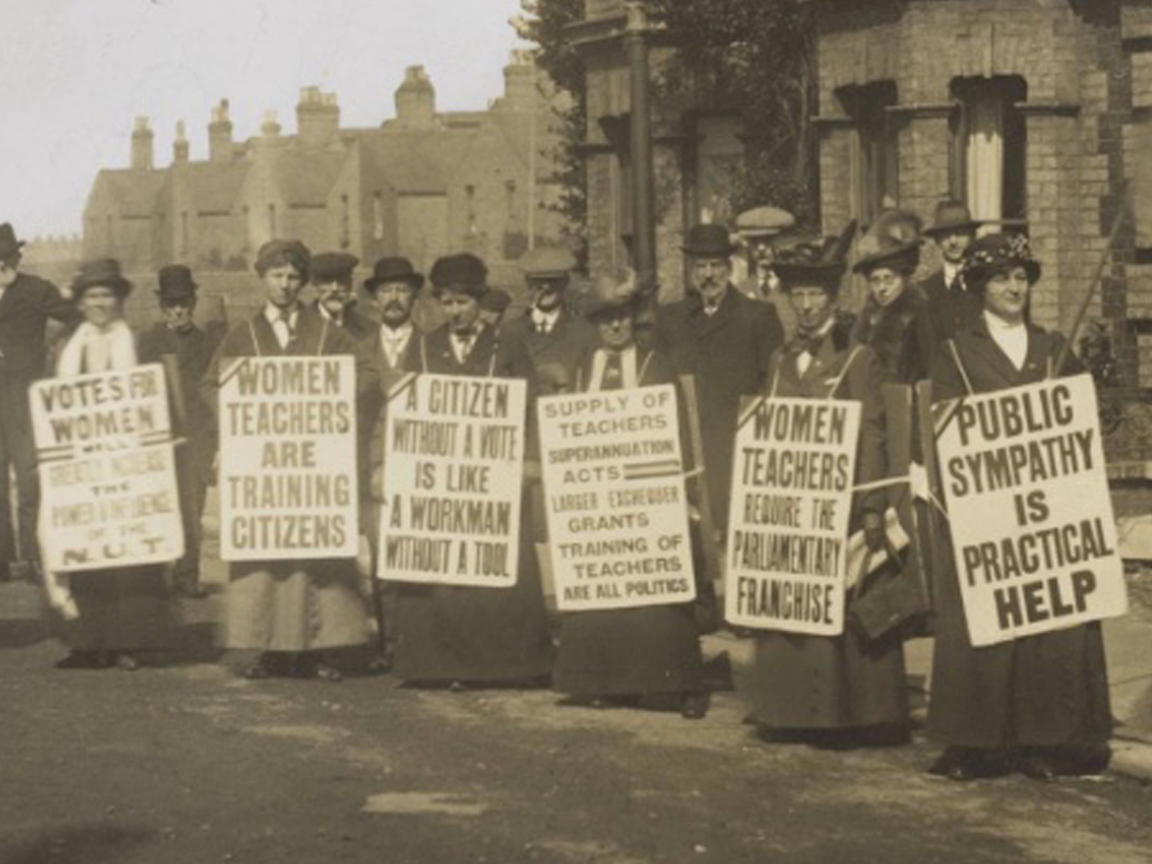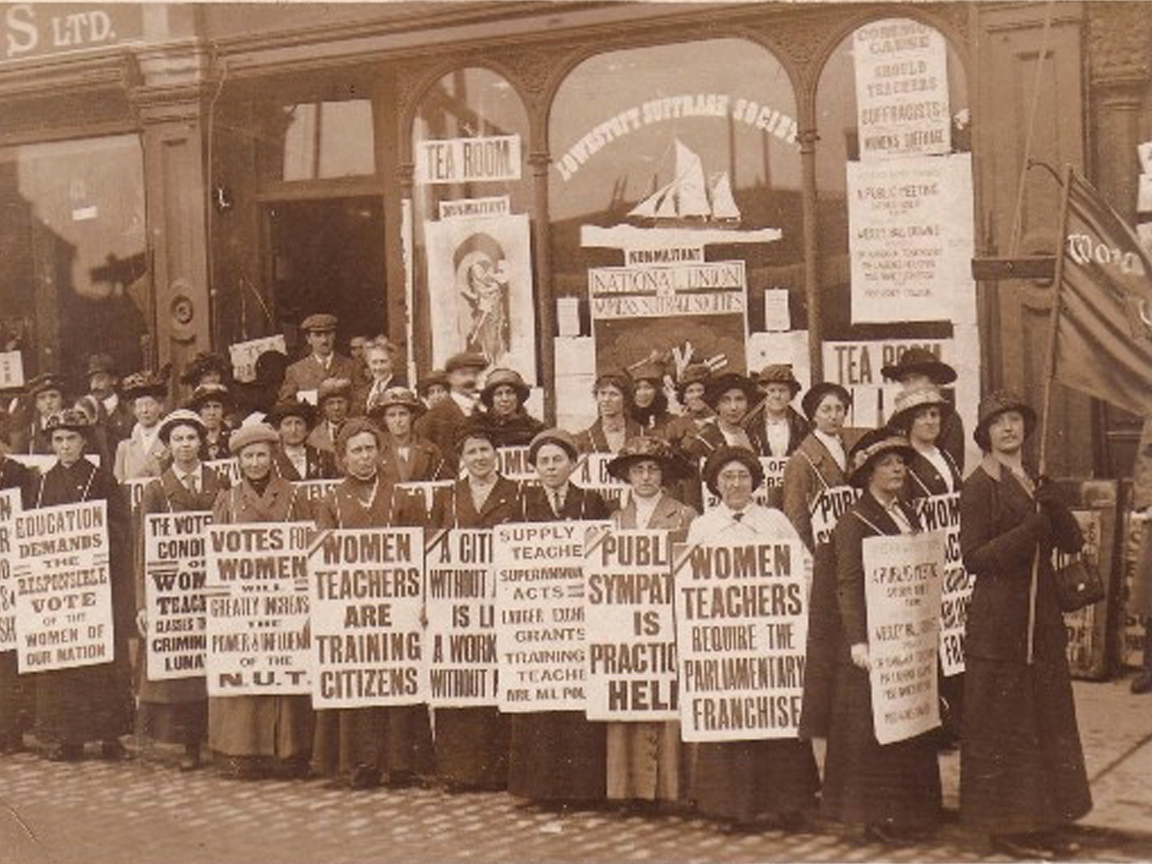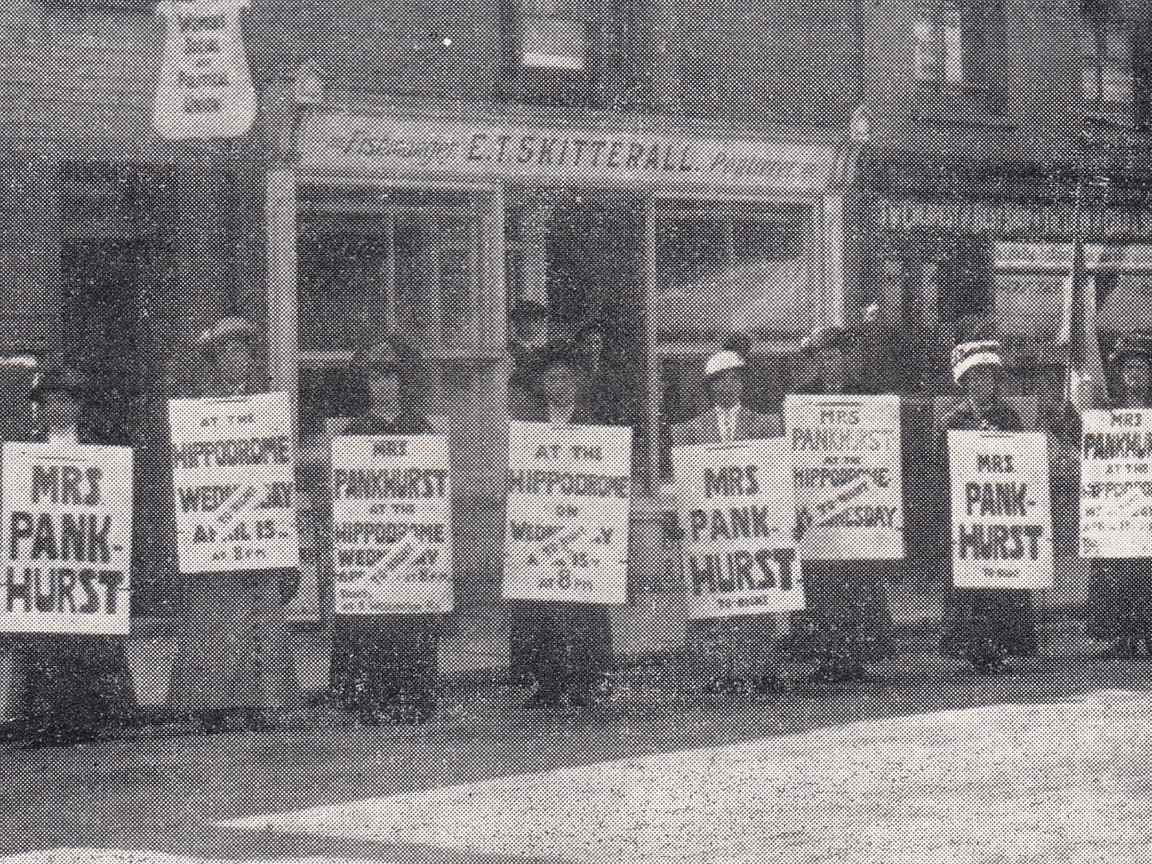


The educated middle and upper class women who came to holiday in Lowestoft brought with them some baggage that didn't pack neatly into their steamer trunks. The visitors of the Fair Sex were comfortable enough to have the leisure to study the Great Issues of the Day, but poor enough to know the precarious nature of their station in life, where the death of the male breadwinner could plunge the entire family into immediate poverty. I have a surprising number of post card in my collection from women who have traveled alone to Lowestoft to do secretarial work, social work, accounting, and other managerial jobs back when we don't think of women being free to do that sort of thing. The point is, they weren't "free" to work. Working was not a hobby. Like the Scottish fisher women; they worked because they had to.
Lowestoft welcomed visitors; it always had. And when the visitors came they found a lively place filled with a wide variety of well-traveled and well-informed citizens of all types; citizens who attended lectures, populated reading rooms, enjoyed a brilliant arts community and actively researched the latest science and technology of the day.
So visitors and locals alike brought their progressive views, and they weren't shy in expressing them. Along with liberal views on everything from child labour to women's participation in the work force, there was surprising local support for women gaining the vote. There was enough local agitation for women's sufferage, or the right to vote, that the Lowestoft Journal wrote quite regularly about the subject. The articles were written in the style of the day and the reporters often had very emphatic opinions which they openly shared in their reports.
This page won't delve deep into the politics, the biographies of the principle actors, and social history of the Suffragette Movement. You'll find much better accounts elsewhere. What I'm highlighting here is Lowestoft's not inconsiderable influence on the women's rights movement.
The tone of the reporting in the Lowestoft Journal and other local papers was generally gently belittling, even as some writers (all male) attempted to lighten their disparaging tone with humour. But as biased as the Lowestoft Journal reporting was, it was far better than the articles I read in other newspapers which often had a vicious bent that startles the modern reader. The LJ writers were genuinely puzzled as to why women wanted to even bother with voting and I'm often struck by the very hurt tone of "are we men really that bad?". At least they didn't call the Suffragettes insane, sub-human...or worse.
I've found articles of Suffragette events that occured in Lowestoft, such as marches and protests, reported in newspapers from Scotland to Wales and everywhere in between. We made the national press over women's desire for equality many times.
One of the first articles was published in 1909 and was a local response to national actions taken by the Women's Social and Political Union headed by Emmaline Pankhurst. This was soon after the split in the women's movement between the "let's do this the polite way" people and those who, like Mrs. Pankhurst, wanted much more radical action.
The Journal reporter noted that the movement was getting harsher and more violent even as Lowestoft was still in the "let's all be civil about this" stage. His report centered on the "scathing observations" by Lady Violet Greville, which essentially was an attempt to shame the women into stopping this voting nonsense and begging them to return to lady-like behaviour.
You can read the article here.
The peak of Suffragette activity in Lowestoft occured in April of 1914 and mirrored a time of intense national agitation that involved extreme violence, prison, hunger strikes, vandalism, and even death in the service to the cause.
Lowestoft was a respectable tourist resort and in April of 1914 the most respectable of national conventions opened here, the National Union of Teachers, or NUT. Back then, like now, most teachers were female and so a large, national convention of educated working women was a natural attraction to the organisers of the woman's sufferage movement and the grande dame, Mrs. Emmeline Pankhurst, and her cadre set up shop on Waterloo Road, right next to the Prom and in the middle of the convention action. They established a base of operations that included a place to talk, read Suffragette literature, rabble-rouse, and have a little sit-down and cup of tea (at a reasonable price!) when it all became too much.
You can read the "Suffragette" article about the run-up to the convention here.
Amongst the teachers attending the convention, there was real trepidation about the Suffragettes. Quite a few of the teachers resented that their convention was about to be hijacked by a radical group; others felt that their issues as teachers and working women were were natural fit with the WSPU goals. At the weeklong convention, the WSPU had parallel marches and speeches. On Sunday, Suffragettes had a demonstration during the services held at St. John's Church and a few had to be dragged out of the church so that worship could continue.
You can read about the NUT convention and the anxieties about the Suffragettes here.
During the time the WSPU was in Lowestoft no violent acts of terrorism occured in town, but locally two severe incidents were widely blamed on the Lowestoft suffragettes. One was a fire that destroyed the new pier at Great Yarmouth, which was widely blamed on a bomb planted by a suffragette, and the other was a fire that destroyed a hotel in Felixstowe. No women were ever arrested in either instance, and I expect that the dodgy electrics and gas lines of the era were as likely to arouse suspicion as any fire-breathing, rabble-rousing woman.
The fact that people so easiy believed that a woman who wanted the vote was so dangerous that they would build an bomb and plant it speaks to the febrile atmosphere of the time.
Read an article about the Great Yarmouth bombing here.
But that was April of 1914. Ten weeks later, in July, the Archduke Ferdinand was assassinated in Austria and so began the Great War and the women who campaigned for voting equality had other issues to deal with. In 1918, with the Representation of the People Act and after exemplary work by the women of Britain in the war effort, there came the realisation that human beings, no matter what their class or gender, are equal and at that point some women and some men earned the right to vote. Full adult sufferage did not come to Great Britain until 1928.

Events, clubs and activities are updated here. Do you have an event or club you want posted? Let us know!